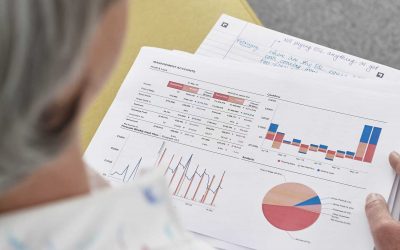The saying “Cash is King” is very true: profit doesn’t pay the bills. But that doesn’t help when there just isn’t enough cash to go round and you need help with managing cashflow and getting out of trouble.
This is the final instalment in a series of posts that I started during the summer looking at the impact of the Covid disruption on cashflow and suggesting ideas for action to improve it.
Background
Recently it has become clear that the government does not feel able to support every business that is struggling with the impact of Covid. This has been greeted with dismay by a large number of businesses who would be financially viable were it not for the restrictions that are currently in place.
With the prospect of social distancing and local lockdowns continuing for the foreseeable future what can be done to ease the pressure? Solutions to cashflow problems are always individual to a business; dependent on what assets they have and the owners’ attitudes to the risk that they may be undertaking. So I want to talk more here about ways to approach your own issue in order to make a meaningful plan.
How long has this been going on?
If you stand back and think about the last few years (life before Coronavirus) was everything rosy then? In most cases lockdown in March was a bolt from the blue that upset a profitable, stable business. But in some cases the business was lurching from one emergency to another trying to keep ll of the creditors happy with limited funds.
In both cases there are big challenges ahead, but how you approach them depends on whether things getting back to “normal” will help cashflow.
Furthermore, what do you think needs to happen in order to improve your situation? This is largely going to be outside of your control, but working through a range of scenarios could help you to understand how changes in the future will impact your business.
Back to drawing board
My focus is always on the cashflow forecast. At times like this there is no other way to manage your business.
With the information you have can you work out a basic level of spending every month? A “burn rate” will help you understand how much cash you need to be taking each month in order to sustain your current spending. This is different from breaking even from a profit perspective; for a start it will include any loan and finance payments. But more importantly you need to think about setting aside money for VAT every time you get a customer payment to avoid shocks at the end of the quarter.
With this information on hand how long can you keep up the current spending rate for? What can you do to slow down the burn?
Challenge your assumptions
Sometimes the forecast doesn’t look as bad as reality – usually this highlights that customers are taking longer to pay than the terms that were offered to them. This is quite common in the current circumstances. It may be that time spent calling customers and chasing debts could pay dividends here, even if you need to agree to payment plans.
Rent arrears & payment holidays
The Coronavirus Act provided protection for businesses who were not able to pay their rents and this has been extended now until December 31st 2020. However the best course of action would be to discuss this with the landlord; the law purely limits the potential for eviction – if you want to remain in the the lease the rent will need to be paid at some point.
Also, many lenders have offered payment holidays on loan repayments. But once again, this simply delays the spending rather than taking it away, so the impact needs to be carefully considered before any action is taken.
With nearly two months left to apply for a Coronavirus (CBILS) or Bounce Back loan there is a chance to access additional cashflow if you have not already made use of the facilities. There is now a wider variety of lenders offering CBILS loans, and some may take a more innovative approach than the high street banks did during April and May, so it could be worth looking again at this if you were unsuccessful earlier in the year.
There may also be opportunities to re-finance larger assets or even renegotiate existing loans in order to slow the repayments and support cashflow.
The bottom line
Hopefully there are options to be looked into to try to hold on to cash within your business, but realistically these may not all be possible or palatable given the current state of the economy.
The biggest worry that I come across when discussing cashflow issues with struggling businesses is that often the business owner has given a personal guarantee against a business loan or there are other assets which would be forfeited if payments were not maintained.
If you are worried about your circumstance it is worth taking advice now. I am talking to clients all the time about help with managing cashflows. Every case is individual, but since March the government has brought in temporary changes to the insolvency law to allow Companies to continue in business while recovering from the financial impact of the pandemic. A number of these measures have now been extended further until December or even March 2021.
However there is nothing to be lost from consulting with an expert; an Insolvency Practitioner or experienced accountant, to ensure that you are making the right decisions. Insolvency Practitioners are often seen as being scary, harbinger of doom but in my experience they are always professional but also approachable, practical and experts in helping businesses in distress. Better to spend a little time discussing the situation with a qualified adviser than to spend weeks agonising over your fears.
At the end of the day, if you are worried ask for advice, get organised and be realistic.
For more information, take a look here at how I can help businesses understand what’s going on in the finances and plan for healthier cashflow.




